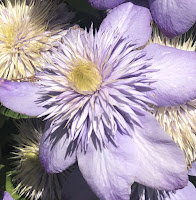
Podcast shares tips on best roses to grow for bouquets

|
|
Olympiad is one of the best red roses to grow for use in bouquets. (Photo:
Debbie Arrington)
|
The rose is overwhelmingly America’s pick. Four out of five people say roses are their favorite flowers. Roses make up 84% of all purchased cut flowers – and seven out of every 10 of those are red.
But how do you grow bouquet-worthy blooms at home? Which varieties make the best cut roses? And how do you get them to last longer in the vase?
These are some of the rosy topics discussed by yours truly, master rosarian Debbie Arrington, during this week’s “Garden Basics with Farmer Fred” podcast, hosted by Farmer Fred Hoffman.
“Roses are beginning to put on a show throughout most of rose-growing country, especially USDA Zones six through 10,” says Hoffman. “What are the best roses to grow that not only look nice in the garden, but do especially well as cut flowers in the house? What are the roses that have outstanding shape and color, but also can last a long time in a vase, and aren’t a hassle when it comes to dealing with their prickles, in other words, ones that aren’t a thorny mess?”
Debbie suggests more than two dozen varieties that fit that description plus offers tips for keeping those roses looking good, on or off the bush.
Among the best long-stemmed red roses to grow in your own garden: Olympiad, Mister Lincoln and Veterans’ Honor.
Prefer pink? Consider Pink Promise, Queen Elizabeth, Friendship, Gentle Giant and Hot Princess.
Want longer stems? Cut lower on the stem (farther away from the bud) – even when deadheading (removing spent blooms). Hybrid tea roses tend to grow to a certain height and stem length. By always cutting long stems (instead of snipping off spent flowers near their base), the bush will continue to grow new stems the same length.
Listen in and learn more: https://gardenbasics.net/episode/195-the-best-roses-for-cut-flowers-786 .
-------------------------------------------

Comments
0 comments have been posted.Sacramento Digs Gardening to your inbox.
Sites We Like
Garden Checklist for week of May 5
Survey your garden after the May 4 rainstorm. Heavy rain and gusty winds can break the neck of large flowers such as roses. Also:
* Keep an eye on new transplants or seedlings; they could take a pounding from the rain.
* Watch out for powdery mildew. Warmth following moist conditions can cause this fungal disease to “bloom,” too. If you see a leaf that looks like it’s dusted with powdered sugar, snip it off.
* After the storm, start setting out tomato transplants, but wait on the peppers and eggplants (they want warmer nights). Pinch off any flowers on new transplants to make them concentrate on establishing roots instead of setting premature fruit.
* Trim dead flowers but not leaves from spring-flowering bulbs such as daffodils and tulips. Those leaves gather energy to create next year's flowers. Also, give the bulbs a fertilizer boost after bloom.
* Pinch chrysanthemums back to 12 inches for fall flowers. Cut old stems to the ground.
* Mulch around plants to conserve moisture and control weeds.
* From seed, plant beans, beets, cantaloupes, carrots, corn, cucumbers, melons, pumpkins, radishes and squash.
* Plant onion sets.
* In the flower garden, plant seeds for asters, cosmos, celosia, marigolds, salvia, sunflowers and zinnias. Transplant petunias, zinnias, geraniums and other summer bloomers.
* Plant perennials and dahlia tubers for summer bloom.
* Don’t wait; plant summer bulbs, such as gladiolus and tuberous begonias.
* Harvest cabbage, lettuce, peas and green onions.